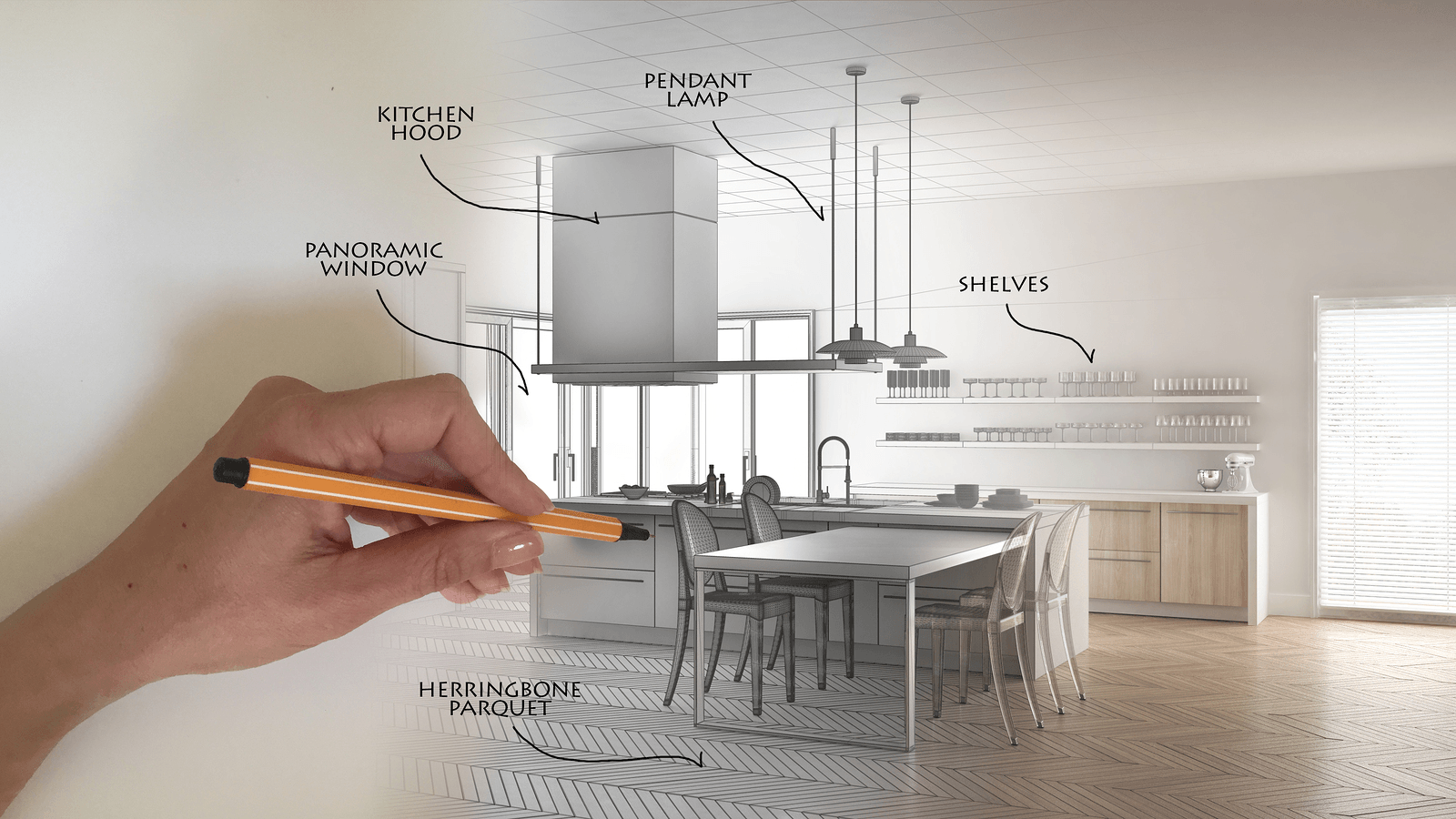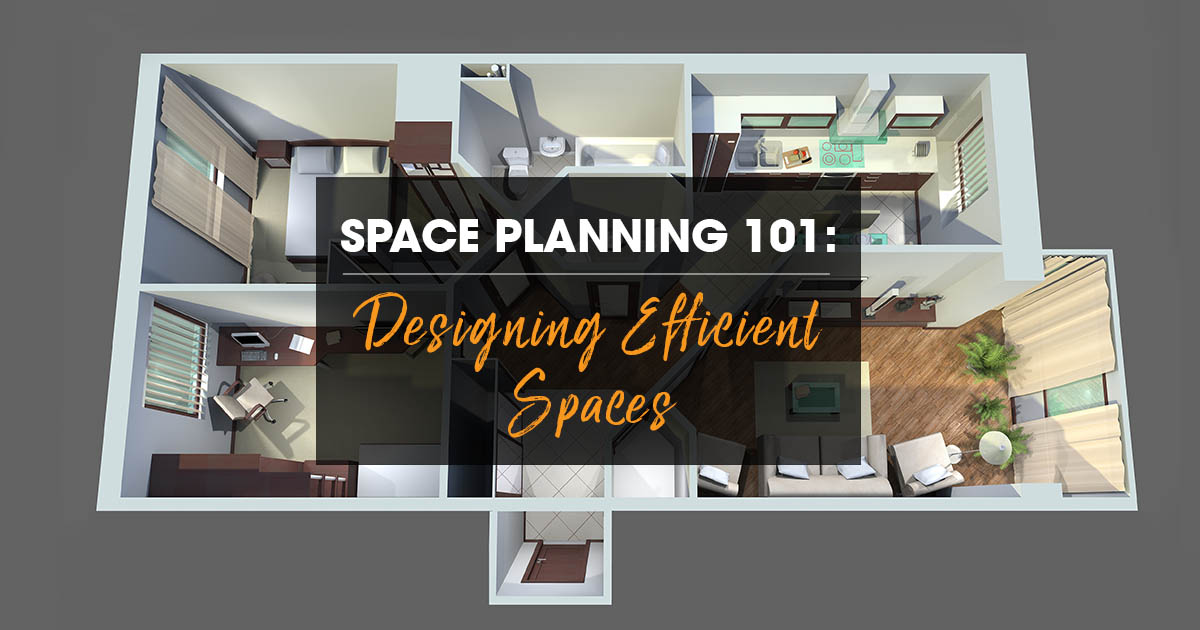Table Of Content

If you start a project without first doing interior design space planning first, the whole concept could fail. Whether interior design for restaurants, small apartments or commercial spaces, space planning is vital so that every inch is purposefully utilised to ensure functionality and visual appeal. Before diving into the several facets and processes of space planning, it is crucial to understand its significance in interior design, especially in modern interior design trends.

Office Space Planning
Moreover, effective space planning enables you to make the most of your square footage, regardless of whether you're working with a spacious living area or a cozy nook. Space planning is an essential step in the interior design process. Without proper space planning, you risk creating a design that is not optimal and that doesn’t work well for your client.
Define the Flow of the Space
Jason is the Director of Design & Construction at Avenue Interior Design, where he enthusiastically applies his 25+ years of experience in the hospitality design field. He leads large-scale complex projects from concept through completion, using his diverse talents, including space planning, interior architectural design, and graphic design. He also focuses on the practical aspects of every project and excels in project management, CAD management, and document management.
A. Establishing traffic flow and circulation patterns
Based on these needs, the design team will make functional choices to promote a specific lifestyle. In Communication Studies from UCLA and began her career in social media marketing while employed at an LA-based children’s lifestyle and toy brand. Soon her artistic inclination for building and creating, along with her sharp eye for design, led to an opportunity within that company to design new products. During that time, she created numerous product lines, including an activity kit collection for Target, a party décor line, and a children’s board game with integrated VR technology.

It involves creating a functional layout that enhances the flow of movement and makes the most of the available area. Effective space planning is crucial to ensure that an interior space is both aesthetically pleasing and functional. Faye Studio offers a space planning service to help clients optimize their space for their needs. Space planning involves arranging furniture, fixtures, and equipment in a room or area to maximize function and efficiency in an aesthetically pleasing arrangement.
How to create a space plan for your interior design project
By creating these zones, you can make the room more functional and comfortable for everyone who uses it. Finally, you should also consider the emotional and psychological impact of the design. The colors, lighting, and other design elements can all affect the mood and emotions of the occupants. You need to take into account their placement and size, as well as any other architectural features that might affect the design. You should also consider the prevailing winds and other environmental factors. Site and orientation will help you to determine the best placement for windows and other design elements.
E. Considering accessibility and universal design principles
The distance between counters, appliances, and the sink all have to be measured out prior to executing your design for optimal results. Asking these types of questions will help you determine the main purpose of the room, making it easier for you to define specific zones. Consider the color palette, furniture allocation, and focal points of each zone when evaluating it. Evaluate people’s ability to move freely through the room without encountering unnecessary obstacles. With over 10 years of experience in construction, we partner with owners and design professionals to build high-quality projects. Carefully planning the density of your furniture arrangements can make your space more liveable by supporting different uses and evoking different feelings.
In conclusion, this blog post has explored the fundamental aspects of space planning in interior design. We have delved into assessing and analyzing space, designing room layouts, considering design styles and personal preferences, and discussing the future of space planning. This could involve creating dedicated workspaces, incorporating storage solutions, or designing multifunctional areas that adapt to various activities. By understanding the lifestyle and needs of the individuals using the space, designers can optimize the room layout to enhance comfort, convenience, and functionality. The digital age has brought forth a plethora of online space planning resources and applications that offer convenience and efficiency.
Allow for an easy flow through the room
Here are ten expert tips to help you think differently about space planning and impress your clients with the expertise that will help them enjoy their space more than they thought possible. Put simply, we think of spaces as having two distinct functions and these can either be augmented or limited depending on what the client wants and/or how much space is available. Prospective spaces look out into other areas or outside and refuge areas are designed for rest and retreat. If those decisions have been informed by careful and intentional space planning, you’ll be much more confident that the end result truly meets client needs now and in the future. It is absolutely crucial to make sure that there is enough room for people to move around the space comfortably without feeling cramped or blocked in. This is especially important in areas with high traffic, such as hallways or entryways, or in rooms that are “pass-throughs” to other spaces.
Finally, it’s important to consider the emotional and social aspects of the space when planning the layout. Make sure to distribute furniture and decor evenly throughout the room to create a sense of balance and harmony. Measure the dimensions of the room and make note of any permanent features such as windows, doors, and fireplaces. You should aim to create a space that is both functional and emotionally satisfying. Special needs and the size of the occupants are also important considerations when designing a space.
The design needs to be human, which means it must include more than just interesting decorations or architectural decisions. Instead, it also needs to fulfill psychological needs and help promote good mental health, physical health, etc. The easiest way to try different furniture arrangements is by using a reusable architectural furniture scale (like the one included with Designer in a Binder). Space planning helps you maximize the available space in a way that makes sense for how the space is actually used!
Once the bubble plan is complete, it is time to draw up a detailed plan. You can use either a large piece of paper, or software on the computer. Having a better understanding of the purpose of a room will make it easier to define different zones and plan the room properly. Human-centric design means conforming the room to healthy human habits, not vice versa.
Create detailed floor plans, elevation drawings, and renders that will serve as a guide for the design of the room. This will assist other contractors if they need to contribute to the finished space. Determine the function of each room before arranging furniture and décor to best suit that function. Rooms can have multiple functions that correspond to different zones of the room.
Another common mistake is ignoring who will use the room and how it will be used. Different rooms have different functions and require different layouts. Determine where your doors, windows, and hallways are, and make sure that they have clear, unobstructed access. For example, using light colors on the walls and ceiling can help to create the illusion of more space.
In conclusion, the art of space planning is about striking a balance between efficiency and functionality. By prioritizing efficiency, interior designers can transform even the smallest spaces into highly functional areas. The key lies in understanding the needs and activities that will take place in the space and tailoring the layout accordingly. For instance, in a small studio apartment, employing multifunctional furniture pieces and utilizing vertical storage solutions can make a significant difference. For every interior design project, space planning is the first step in the design process.
Many interior designers enjoy the client interaction aspect of space planning. Remember, the client is the most important person in the process. A collaborative space planning stage sheds light on your thought process and design decisions.

No comments:
Post a Comment